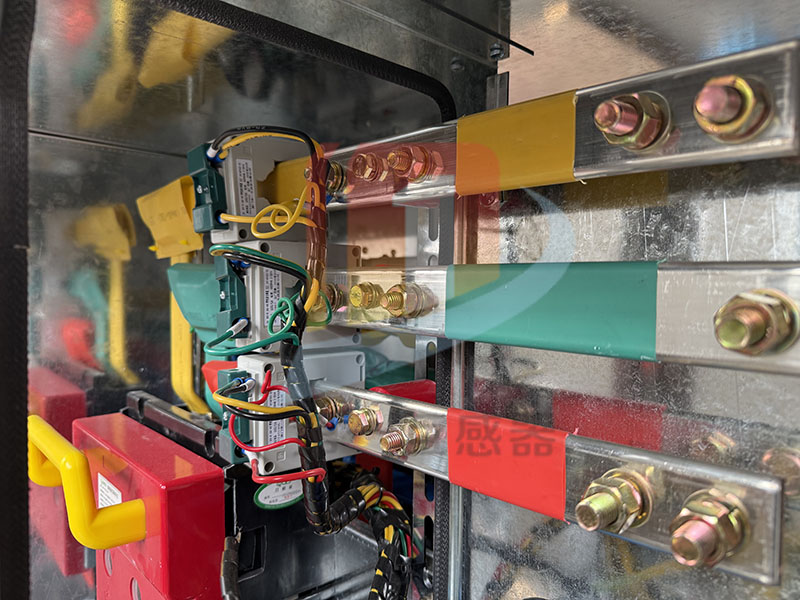单相电与三相电的区别及互感器应用场景
The difference between single-phase and three-phase electricity and the application scenarios of transformers
一、单相电与三相电的基本概念
1. Basic concepts of single-phase and three-phase electricity
1. 单相电(Single-Phase Power)
1. Single-Phase Power
- 由一根相线(火线)和一根中性线(零线)组成
- Consists of a phase line (live line) and a neutral line (zero line)
- 标准电压:220V(中国居民用电)
- Standard voltage: 220V (Chinese residential electricity)
- 特点:结构简单,适用于低功率电器,如家用照明、小型电器等
- Features: Simple structure, suitable for low-power electrical appliances, such as household lighting, small electrical appliances, etc.
2. 三相电(Three-Phase Power)
2. Three-Phase Power
- 由三根相线(相位差120°)组成,可带中性线(三相四线制)
- Consists of three phase wires (phase difference 120°), with neutral wire (three-phase four-wire system)
- 标准电压:380V(中国工业用电)
- Standard voltage: 380V (China industrial electricity)
- 特点:功率传输稳定,适用于大功率设备,如电机、工业机械等
- Features: Stable power transmission, suitable for high-power equipment such as motors, industrial machinery, etc.

单相电与三相电的主要区别
The main differences between single-phase electricity and three-phase electricity
对比项
Comparison Items | 单项电
Single phase electricity | 三相电
Three-phase electricity |
组成
composition | 1相+1零线
1 phase + 1 neutral line | 3相线(±120°相位差)
3-phase line (±120° phase difference) |
电压
Voltage | 220V | 380V |
功率
power | 适用小负载
Suitable for small loads | 较高 适用于大负载
Higher for heavy loads |
应用场景
Application Scenario | 家用
Home | 工厂 大型设备
Factory large equipment |
传输效率
Transmission efficiency | 低 | 更节能
More energy-efficient |
三、互感器在单相与三相系统中的应用
3. Application of Transformers in Single-Phase and Three-Phase Systems
1. 单相系统中的互感器应用
1. Application of transformers in single-phase systems
- 电能计量:单相电能表搭配电流互感器(CT),提高测量精度
- Electricity metering: Single-phase energy meter with current transformer (CT) to improve measurement accuracy
- 漏电保护:剩余电流互感器(RCD)检测漏电流,保障用电安全
- Leakage protection: Residual current transformer (RCD) detects leakage current to ensure power safety
- 电流监测:单相CT用于监控负载电流,防止过载
- Current monitoring: Single-phase CT is used to monitor load current and prevent overload
- 电压测量:单相电压互感器(PT)用于电压监测
- Voltage measurement: Single-phase voltage transformer (PT) for voltage monitoring
2. 三相系统中的互感器应用
2. Application of transformers in three-phase systems
- 电能计量:三相CT+PT组合,用于工业电表高精度计量
- Electric energy measurement: three-phase CT+PT combination, used for high-precision measurement of industrial electric meters
- 电机保护:三相电流互感器监测电机运行状态,防止过载或短路
- Motor protection: Three-phase current transformer monitors the motor operating status to prevent overload or short circuit
- 电力监控:三相PT用于电网电压监测,确保电力质量
- Power monitoring: Three-phase PT is used for grid voltage monitoring to ensure power quality
- 无功补偿:配合SVG/APFC装置,优化功率因数
- Reactive power compensation: cooperate with SVG/APFC device to optimize power factor
四、互感器选型要点
4. Key points for transformer selection
因素
factor | 单相系统
Single-phase system | 三相系统
Three-phase system |
电流范围
Current range | 5A-100A | 50A-5000A+ |
精度等级
Accuracy level | 0.5级、1级
0.5 level, 1 level | 0.2S级、0.5级
0.2S level, 0.5 level |
安装方式
Installation | 导轨式、贯穿式
Guide rail type, through type | 套管式、母线式
Bushing type, busbar type |
防护等级
Protection level | IP20(室内)
IP20 (Indoor) | IP65(工业环境)
IP65 (industrial environment) |
五、总结
V. Conclusion
单相电和三相电在电压、功率和应用场景上存在明显差异,互感器作为关键测量与保护元件,需根据系统特点选择合适的型号。在单相系统中,互感器主要用于电能计量和漏电保护;而在三相系统中,互感器则更多应用于工业电力监控、电机保护和电能管理。
There are obvious differences between single-phase and three-phase electricity in voltage, power and application scenarios. As a key measurement and protection component, the transformer needs to select the appropriate model according to the characteristics of the system. In a single-phase system, the transformer is mainly used for energy metering and leakage protection; in a three-phase system, the transformer is more used in industrial power monitoring, motor protection and power management.
作为专业的互感器生产厂家,我们提供适用于单相和三相系统的全系列互感器产品,满足不同场景需求。如需技术咨询或定制方案,欢迎联系我们的工程师团队!
As a professional transformer manufacturer, we provide a full range of transformer products suitable for single-phase and three-phase systems to meet the needs of different scenarios. If you need technical consultation or customized solutions, please contact our engineering team!